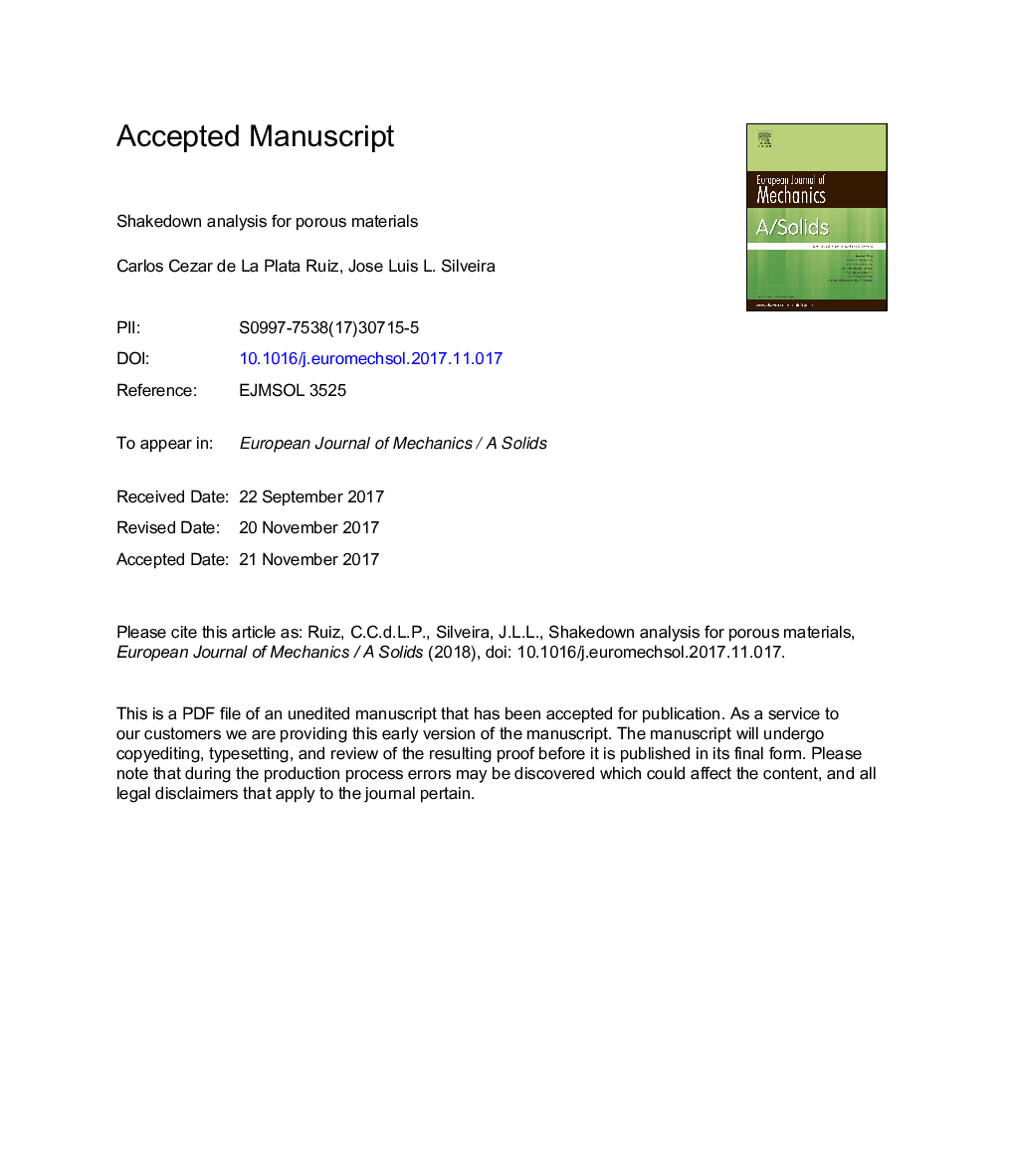| Article ID | Journal | Published Year | Pages | File Type |
|---|---|---|---|---|
| 7170255 | European Journal of Mechanics - A/Solids | 2018 | 38 Pages |
Abstract
Porous materials have numerous applications in industry. Elements such as gears, pins, filters, bearings, and connecting rods, among others, are examples of parts that can be manufactured from these materials, where the presence of varying loads may cause a catastrophic failure. The shakedown analysis is a useful tool to establish the safe conditions for the operation of a structural or mechanical component subjected to varying loads. However, the shakedown analysis of porous materials has received little attention and a general formulation for this problem is not available. This paper presents a static and a mixed variational principle for the shakedown analysis of porous materials and the corresponding numerical solution via the finite element method. A yield function for porous material is obtained from the specific strain energy combined with a relationship between the relative density and the applied hydrostatic pressure. The shakedown analysis performed in this paper is based on a mixed variational principle which gives rise to an optimization problem. The solution provides, not only the largest amplification factor for the domain of load variation, but also the residual stresses and velocities fields. The discretization of the mixed variational principle is performed by the finite element method and uses a triangle with six nodes which permits a quadratic interpolation of velocities together with a linear interpolation of stresses. The validation of the numerical procedure is accomplished by comparing the present simulation with previously published results and analytical solutions for the residual stresses and amplification factor. The finite element method provided good solutions for all the presented examples. The presented variational formulation may be used to obtain the safe condition for mechanical parts made of porous materials and subjected to variable loads. Moreover, it can be used to estimate the relative density distribution in the parts.
Keywords
Related Topics
Physical Sciences and Engineering
Engineering
Mechanical Engineering
Authors
Carlos Cezar de La Plata Ruiz, Jose Luis L. Silveira,
